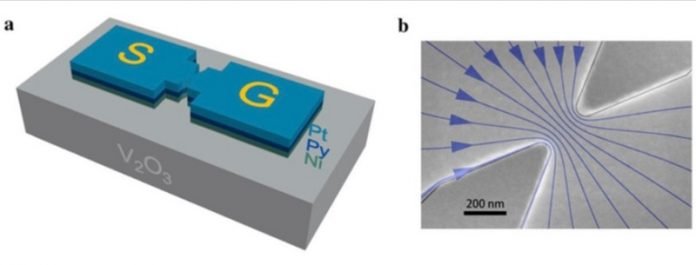
Scientists have developed a means to create a new type of memory, marking a notable breakthrough in the increasingly sophisticated field of artificial intelligence.
“Quantum materials hold great promise for improving the capacities of today’s computers,” explains Andrew Kent, a New York University physicist and one of the senior investigators.
“The work draws upon their properties in establishing a new structure for computation.”
The creation, designed in partnership with researchers from the University of California, San Diego (UCSD) and the University of Paris-Saclay, is reported in Scientific Reports.
“Since conventional computing has reached its limits, new computational methods and devices are being developed,” adds Ivan Schuller, a UCSD physicist and one of the paper’s authors.
“These have the potential of revolutionizing computing and in ways that may one day rival the human brain.”
In recent years, scientists have sought to make advances in what is known as “neuromorphic computing”–a process that seeks to mimic the functionality of the human brain.
Because of its human-like characteristics, it may offer more efficient and innovative ways to process data using approaches not achievable using existing computational methods.
In the Scientific Reports work, the researchers created a new device that marks major progress already made in this area.
To do so, they built a nanoconstriction spintronic resonator to manipulate known physical properties in innovative ways.
Resonators are capable of generating and storing waves of well-defined frequencies–akin to the box of a string instrument.
Here, the scientists constructed a new type of resonator–capable of storing and processing information similar to synapses and neurons in the brain. The one described in Scientific Reports combines the unique properties of quantum materials together with that of spintronic magnetic devices.
Spintronic devices are electronics that use an electron’s spin in addition to its electrical charge to process information in ways that reduce energy while increasing storage and processing capacity relative to more traditional approaches.
A broadly used such device, a “spin torque oscillator,” operates at a specific frequency. Combining it with a quantum material allows tuning this frequency and thus broadening its applicability considerably.
“This is a fundamental advance that has applications in computing, particularly in neuromorphic computing, where such resonators can serve as connections among computing components,” observes Kent.



